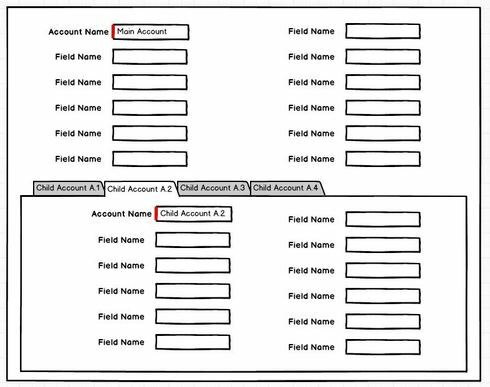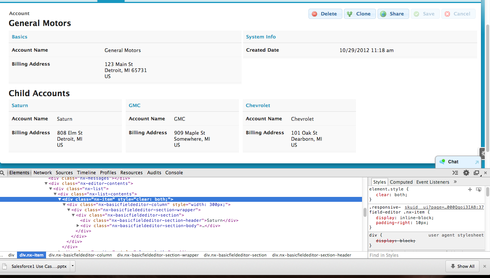We have Account records containing the legal details of the entity. In addition, for each location, we have an Account record that references the parent. Our users spend merry hours clicking back and forth, getting confused in the process. There can be only 1 child record (would be nice to not have a Tab but show this as a seamless client view), or any number of Child Account records depending on the actual client.
While my wireframe is rather crude, it does show the idea of having ‘all you need on the one page’. Can we do this in Skuid today?
While this need is around Parent/Child records from the same Object, I am certain there is also a need for Related records from different objects too.
Question
Show Child records within a Parent record
 +3
+3Enter your E-mail address. We'll send you an e-mail with instructions to reset your password.



